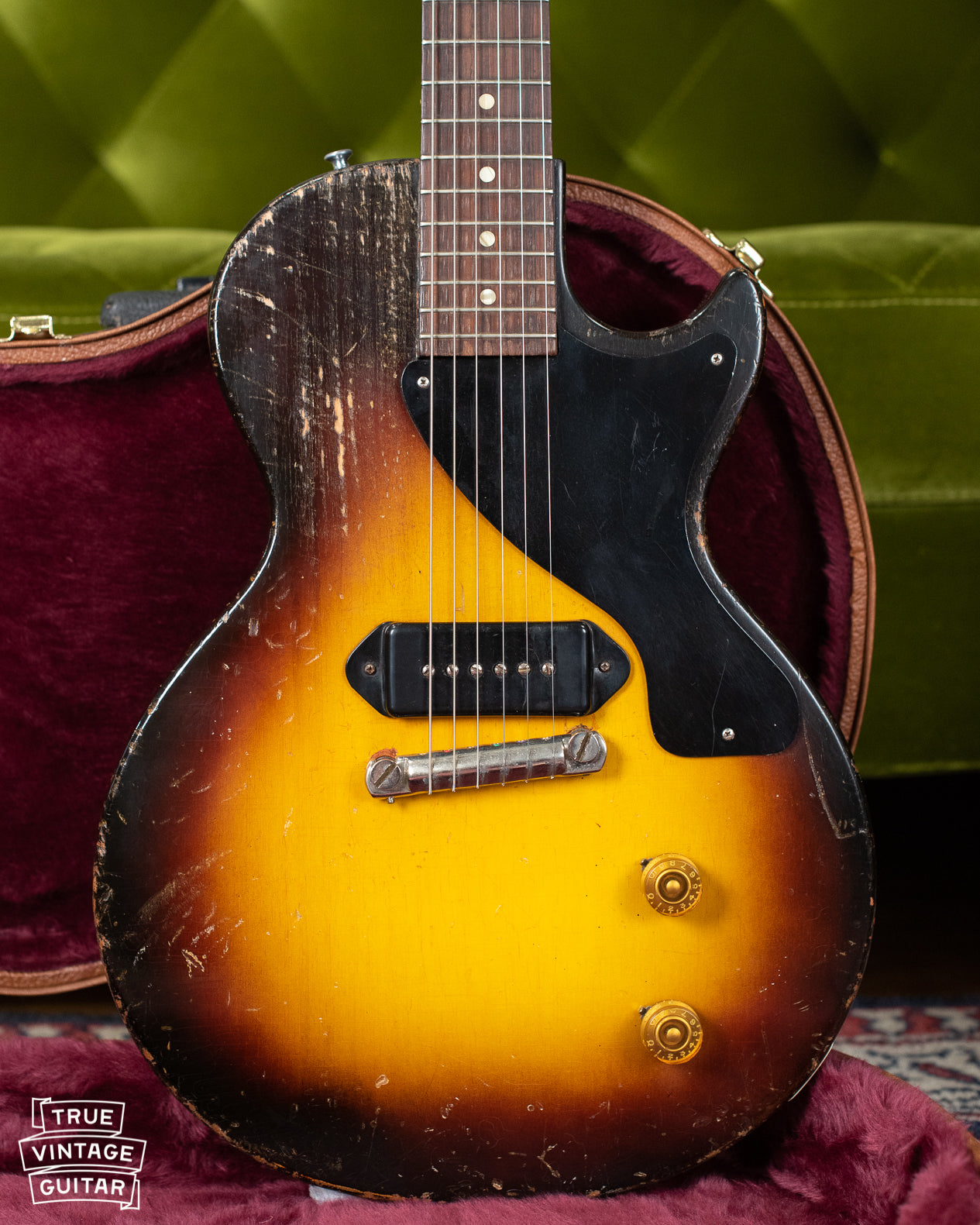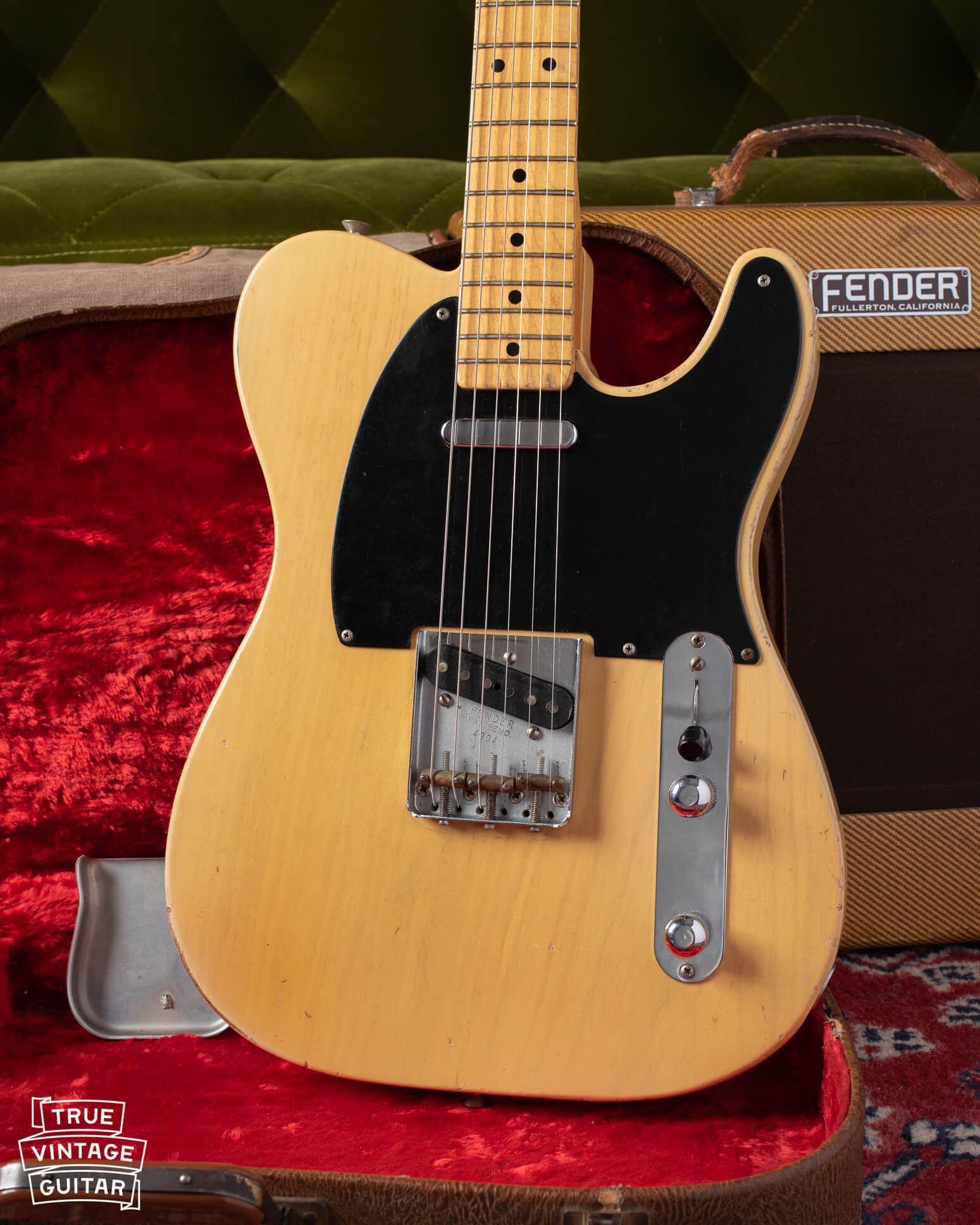The past year of buying guitars has been very good to this Gibson Les Paul collector. When I was contacted by the son of the original owner of this 1954 Gibson Les Paul goldtop back in April, I could tell it was a guitar I needed to have for myself. It still had the old style silk wrapped ball end flat wound strings on it when they sent pictures for me to check out. When I think back to 2021 and the Gibson guitars that contributed to the article by Tony Bacon about me titled The Guitar Safari Champion, this 1954 Gibson Les Paul is certainly on that list.
As a Gibson Les Paul guitar collector, I am always on the hunt for the nicest examples of Gibson Les Paul guitars from the 1950s. 1954 is a fabulous year for Les Pauls, but at the moment, I am looking for a 1956 Gibson Les Paul and a 1958 Les Paul. If you have a 1950s Gibson Les Paul and are curious about what year it was made, you can check the serial number here: Les Paul Serial Number Lookup. If you're curious about how much I would value your Les Paul then you can contact me here: Sell a Gibson. If your Gibson Les Paul is from the 1950s or 1960s then I'd love to take a look.
Gibson Les Paul 1954
By 1954, the gold finished Gibson Les Paul Model was on its third year of production since it was introduced in 1952. The engineers at Gibson updated the solid body offering with an improved neck angle to allow the strings to wrap over the bridge and a new wrap tail style bridge that transferred the string vibrational energy directly to the body. The Les Paul Model stayed largely the same from late 1953 until late 1955 with the addition of a new style two piece bridge and tailpiece we know as the Tune-O-Matic bridge and stop bar tailpiece. Many Gibson Les Paul collectors, including this author, seek out wrap tail era Goldtops from 1954 and 1955 because of the single piece bridge and its unique resonant tone. The wrap tail Goldtops are not likely to intonate quite as tightly as the 1956 and later examples, but there are set up tricks to make them pretty close.

This 1954 Gibson Les Paul is an excellent example of the classic wrap tail bridge era Goldtop. It wasn't a particularly light example weighing in at 9 lbs 4oz, but I didn't notice its weight very much while playing it. I did notice its neck profile while playing it: a hefty 0.92" deep at the first fret and 1.02" deep at the 12th fret. 1950s Gibson Les Paul guitars often have a very full neck profile measurement up through 1958, but begin to slim down a bit in 1959 to about 0.85" at the first and 0.98" at the 12th fret. Gibson further slimmed the average neck profile down to about 0.80" at the first fret and 0.90" in early 1960.
Gibson Les Paul 1954 Values
Gibson guitar collectors use mostly the same aspects to gauge the value of a 1950s era Gibson Les Paul Goldtop. Gibson continually refined the Les Paul Model each year in the 1950s, so it's best to compare the value of your Gibson Les Paul to guitars made during the same year. You can check the year of your Gibson Les Paul here: Gibson Les Paul Serial Numbers. You can contact me here if you're curious about the value of your Gibson Les Paul: Appraisal.

Gibson Les Paul goldtop values will be different for each year of manufacture because each year has different aspects that players look for. Values generally increase every year since 1952, but the significant years are 1954, 1956, 1957, and 1958. The neck angle and bridge improve by late 1953, so those will be more valuable than 1952 and early 1953. Many guitar collectors prefer the improved tune-o-matic bridge of late 1955 and 1956, so there's a large increase of value for those guitars compared to wrap tail goldtops. Gibson introduced the Humbucking pickup (often called PAF by collectors) in 1957, so values jump significantly for those guitars as well. Gibson updated the finish to the Cherry Sunburst (or Burst) style finish in mid 1958, and values significantly jump for those guitars. 1959 is known for the perfect transitional neck profile, great color, and great top figure. Gibson Les Paul guitar values peak for those guitars made during that year, then drop for 1960 because of the slimmer neck profile and less pleasing red dye that resists fading.
The value of a 1950s Gibson Les Paul also depends on the exact model, since Gibson offered no less than 5 different Les Paul models by 1954. Les Paul Goldtops may also be known by the catalog name Les Paul Standard (used by about 1956) which is second only to the Les Paul Custom in the 1950s pricing line up. The Les Paul Standard is generally the most valuable in the line, followed by the Les Paul Custom, Special, TV Model, and Junior, in that order. identification of the exact model is important when comparing market values of vintage Gibson Les Paul guitars.
The values for 1950s Gibson Les Paul guitars will also be significantly affected by their condition and level of preservation. This aspect of vintage guitar value is much more subjective than the year or model, since every vintage guitar will age differently than another. On average, Gibson guitar collectors will prefer a guitar that is more well preserved to a guitar that is well worn with checking and fret wear. Each Les Paul should be evaluated on a case by case basis because condition can be very subjective. Repairs like a headstock break or a refinish will significantly affect their value even up to about 50%.
You can contact me here if you're interested in how much I would value your Gibson Les Paul goldtop guitar from the 1950s: Sell a Gibson. I prefer clean condition, but may also be attracted to an attractively worn guitar too. I would be happy to take a look and offer my opinion of its value.




